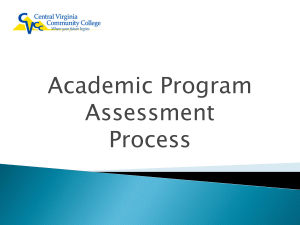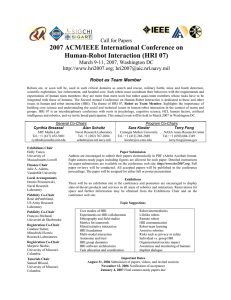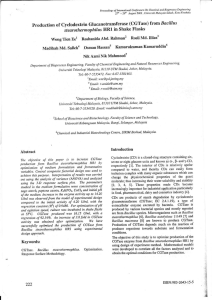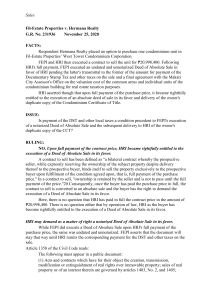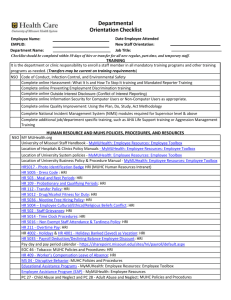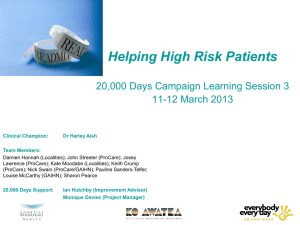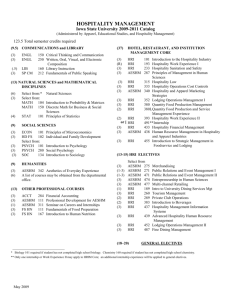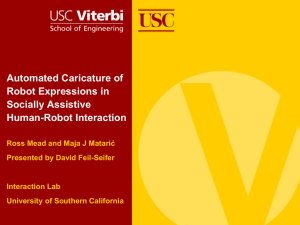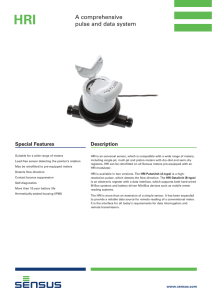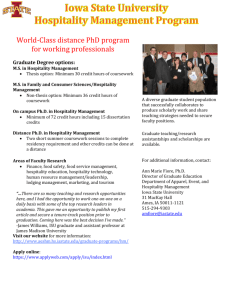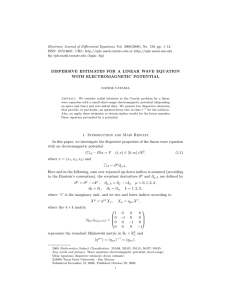session c2 - USC Robotics Research Lab
advertisement
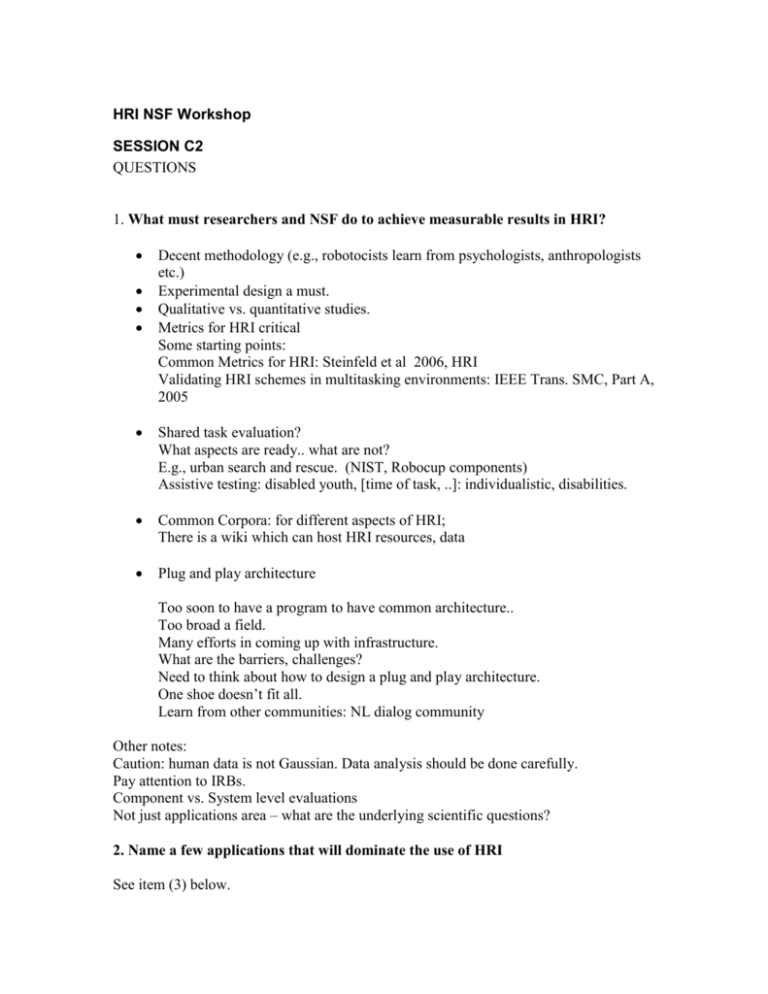
HRI NSF Workshop SESSION C2 QUESTIONS 1. What must researchers and NSF do to achieve measurable results in HRI? Decent methodology (e.g., robotocists learn from psychologists, anthropologists etc.) Experimental design a must. Qualitative vs. quantitative studies. Metrics for HRI critical Some starting points: Common Metrics for HRI: Steinfeld et al 2006, HRI Validating HRI schemes in multitasking environments: IEEE Trans. SMC, Part A, 2005 Shared task evaluation? What aspects are ready.. what are not? E.g., urban search and rescue. (NIST, Robocup components) Assistive testing: disabled youth, [time of task, ..]: individualistic, disabilities. Common Corpora: for different aspects of HRI; There is a wiki which can host HRI resources, data Plug and play architecture Too soon to have a program to have common architecture.. Too broad a field. Many efforts in coming up with infrastructure. What are the barriers, challenges? Need to think about how to design a plug and play architecture. One shoe doesn’t fit all. Learn from other communities: NL dialog community Other notes: Caution: human data is not Gaussian. Data analysis should be done carefully. Pay attention to IRBs. Component vs. System level evaluations Not just applications area – what are the underlying scientific questions? 2. Name a few applications that will dominate the use of HRI See item (3) below. Additionally, HRI decathlon for AAAI demonstrations Highlight the scientific question (not the application) 3. How do these applications demonstrate the use of HRI results? Assistive (Health and Well being) with disabled: adaptability to the individual – tracking novice to expert; establishing relationships with user community. Need clinical factors. Autism, Elder care, Disabled population. Search & Rescue: really unconstrained, unstructured environment; [USF/Minnesota: Search Rescue NSF Center]; mixed initiative needed; communication under uncertainty Navigational dialogs Collaborative assembly, maintenance, training: all encompassing; multimodal communication (speech/gesture) Manipulate, guide, watch.. Medical training.. Including virtual and standardized patients Companion robots for elders, kids. Challenge: social interaction modeling, perception Pet/baby sitting.. Service robots (learning and teaching robots to do task) 4. What needs to be done to establish HRI as a field and build a strong HRI community (conferences, journals, targeted funding, other..) Can we consider an industry-academia center? Grad. Students get funding from NSF and industry. Need a planning workshop. Need industry and institutions Many ideas underway – conferences, journal, Wiki -- things are looking good. Tutorials and meetings to get cross disciplinary knowledge (methodology, design)
